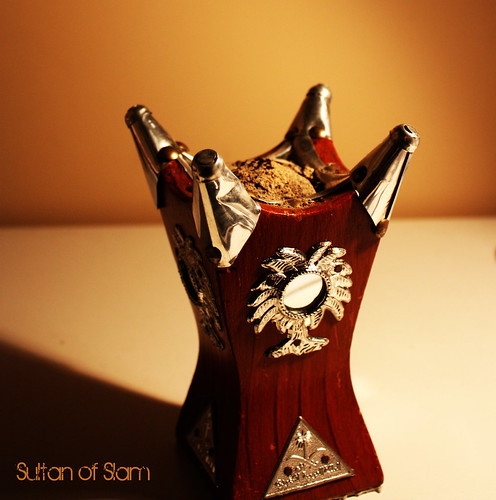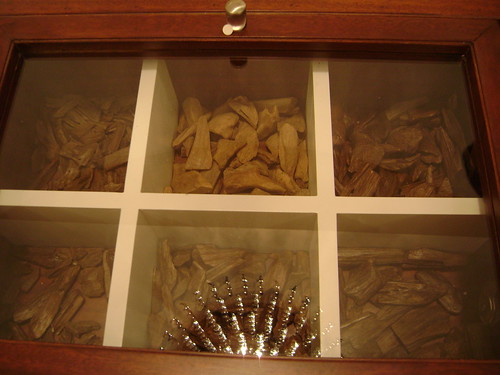Agarwood has made its way from Southern Asia to Arabia by way of the spice caravans, and is known as “oud” in the region, which is also the name for wood, and for an Arabic musical instrument resembling the lute. The nomadic cultures of the Arabs and Bedouins have grown fond of oud’s fine and intense aroma and use it for both religious purposes and for pleasure. Oud has become an inseparable part from Arabic culture.
Oud chips and incense are burnt in an incense burner called mabakhir during the holy month of Ramadan, after breaking the daily fasting with a meal and showering, and before the evening prayers at the mosque. It is also incorporated into the Hadj ceremonies and is burnt during Eid.
Burning oud is considered a great honour, and is part of the customs of guest welcoming (when the host can afford it!). Hospitality is a custom that is held in much regard, and is considered a virtue in Arabia and in the Middle East. The hosts share their best commodities with their guests, no matter how rich or poor they are. What began out of necessity for survival in the desert by offering clean water and a feast to break the wonderer’s hunger has evolved into entertaining with more precious commodities such as coffee, sweets and burning the finest and most precious incense the host possesses.
Oud is also used to scent clothing by saturating the garments in agarwood smoke, a custom that interestingly enough is common to both Arabia and Japan.
Grading: Agarwood manufacturers classify agarwood into four distinct grades:
Grade 1 Black/True Agar: mainly exported to Arabia as incense Grade 2 Bantang: mainly exported to Arabia as incense Grade 3 Bhuta or Phuta: sometimes extracted for a superior oil Grade 4 Dhum: used for oil (Source:
Cropwatch)
Perfumery:The Arabs are particularly fond of oud oil, dehn al-oud, which they use as a personal fragrance. Because alcohol is forbidden in Islam, Arabian perfumes are traditionally either essential oils that are worn neat on the skin, or based in an oil carrier.
Agarwood is the most expensive natural essence known in perfumery, and therefore mostly been used by the royalty or nobelty, or wealthy merchants. Agarwood is more often than never used as a single note from a specific country and grade. And less often it is blended with other notes such as rose, sandalwood, musk, ambergris, etc. And as mentioned in the 1st part of the series, it is not uncommon for the oil to be adulterated with lodh oil and several synthetics.
Oud is also used in a lesser extent in Indian perfumery. I have with me a sample of “musk oud attar”, which is a very dark, musky, animalic oud distilled with other secret plant materials into sandalwood oil. It has great tenacity and longevity.
Agarwood is an unusual woody note that is rarely used in perfumery, because of it prohibitive cost. There is an increased interest in agarwood in the past decade, perhaps triggered by the release of M7 by YSL in 2002, which was the first Western commercial perfume to use agarwood as a distinct note. Until than, agarwood oil was mostly used by Arabian perfume companies (i.e.: Ajmal, Arabian Oud, Madini, Rasasi) and the odd niche perfume house (i.e.: Montale’s oud line).
Agarwood is used in luxurious Oriental and woody compositions. It creates a sensual, resinous-animalic or clean-woody warmth and blends well with resins, balsams, spices and precious florals to make outstanding perfumes. A little touch of agarwood can turn an otherwise simple and ordinary scent into a magical phenomenon.
Examples for contemporary perfumes with agarwood:
M7
Oud Abu Dabi
Oud Wood
Arabian Aud (Ayala Moriel) - one of a kind
Click here for more perfumes I've created containing
agarwood.
P.s. We will come back later with more insights on oud in perfumery.








